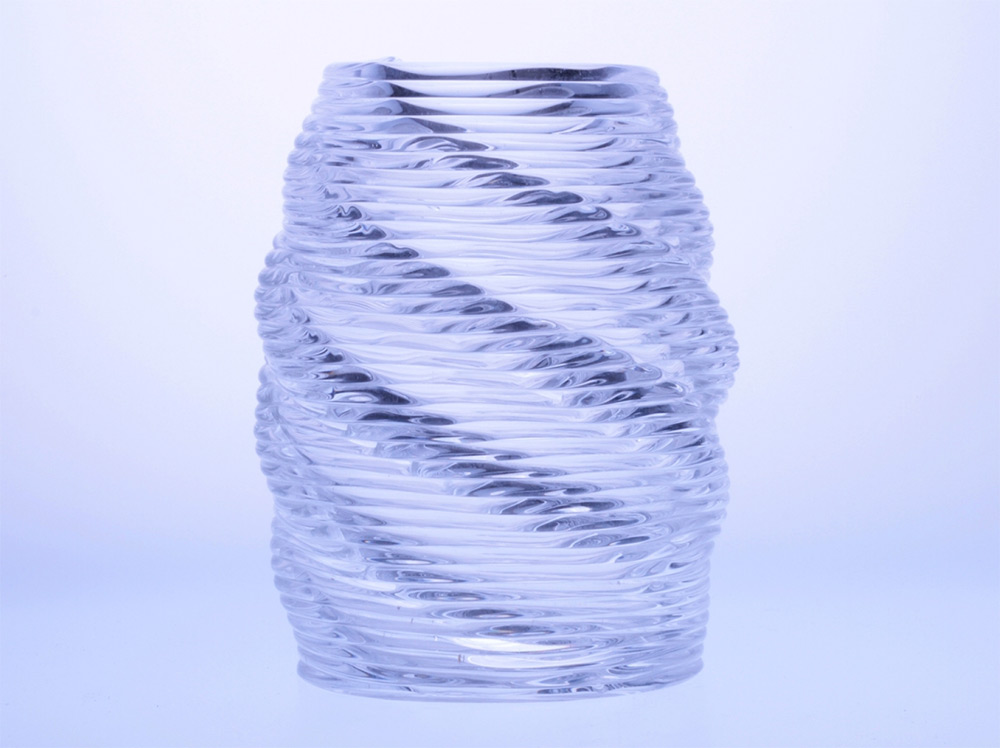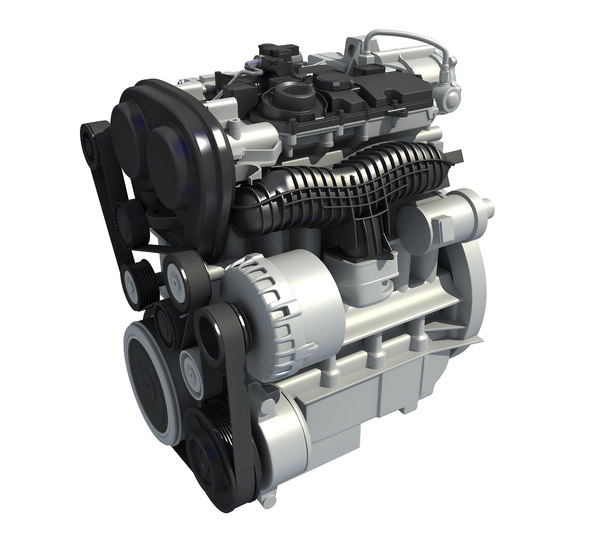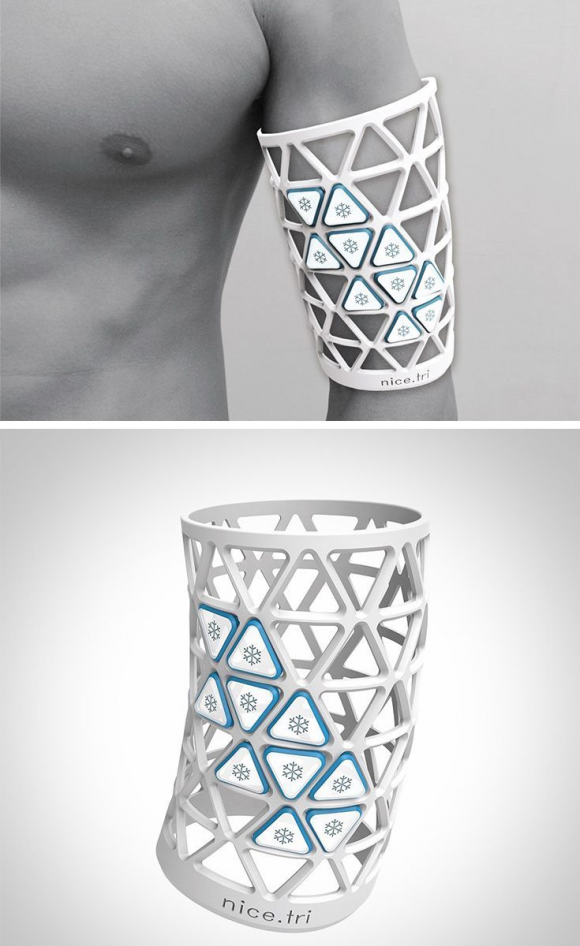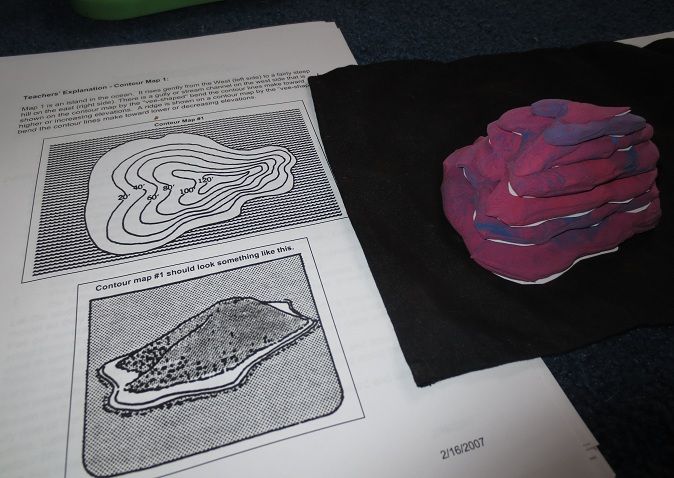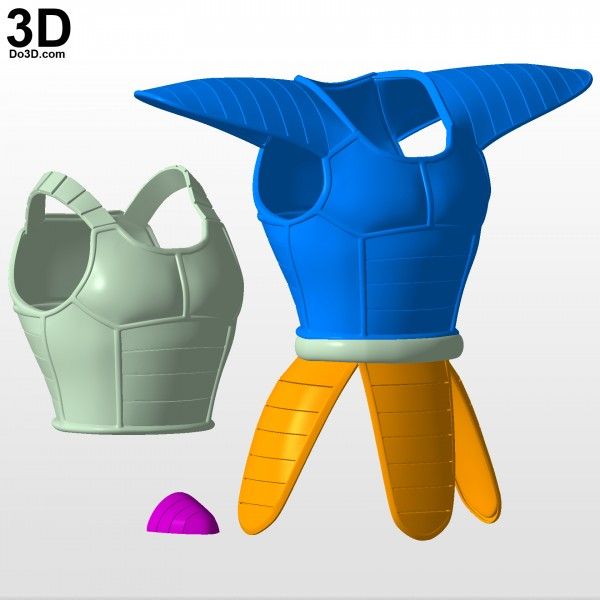Molten glass 3d printer
Glass 3D Printing
3D printed glass manufacturing
Research team (Glass I): John Klein, Michael Stern, Markus Kayser, Chikara Inamura, Giorgia Franchin, Shreya Dave, Daniel Lizardo, Peter Houk. Prof. Neri Oxman
Research team (Glass II): Chikara Inamura, Michael Stern, Daniel Lizardo, Tal Achituv, Tomer Weller, Owen Trueblood, Nassia Inglessis, Giorgia Franchin, Marianna Gonzalez, Yinong Liu, Kelly Egorova, Peter Houk. Prof. Neri Oxman
Year: 2015-present
Location: MIT Media Lab, 2015, Cambridge, MA
Projects: Glass I, Glass II
Position
Glass 3D Printing 2 (G3DP 2) enables an entirely unique means of digital design and fabrication with glass. It is a high fidelity, large-scale, additive manufacturing technology for 3D printing optically transparent glass structures at architectural dimensions.
This novel additive-manufacturing platform includes a digitally integrated thermal control system to accompany the various stages of glass forming. It also includes a novel 4-axis motion control system permitting flow control, spatial accuracy and precision, and faster production rates with continuous deposition of up to 30kg of molten glass.
Process
G3DP2 uniquely enables the additive manufacturing of optically-transparent glass by restructuring the machine’s architecture and process control operations as informed by material properties and behaviors of silicate glass to 3D print building components with tunable, predictable mechanical and optical properties.
This enabling technology builds upon our previous efforts to 3D print optically transparent glass for product scale applications.
Age of Glass Manufacturing in Years
4500
Ancient yet modern, enclosing yet invisible, glass was first created in Mesopotamia and Ancient Egypt 4,500 years ago.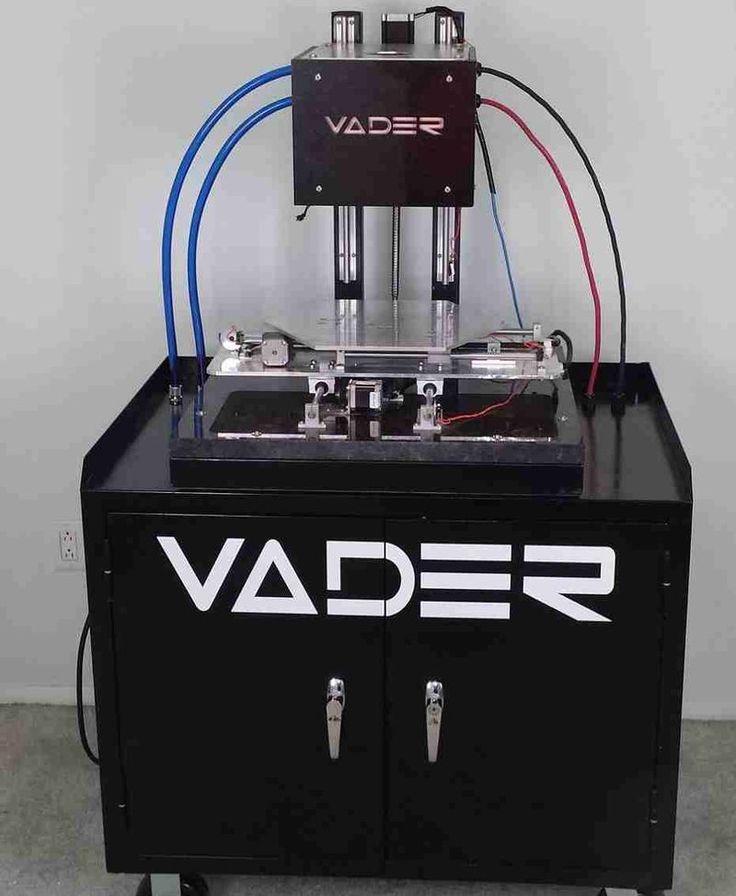 Glass can be molded, formed, blown, plated or sintered; its formal qualities are closely tied to techniques used for its formation.
Glass can be molded, formed, blown, plated or sintered; its formal qualities are closely tied to techniques used for its formation.
From the discovery of core-forming process for bead-making in ancient Egypt, through the invention of the metal blow pipe during Roman times, to the modern industrial Pilkington process for making large-scale flat glass; each new breakthrough in glass technology occurred as a result of prolonged experimentation and ingenuity, and has given rise to a new universe of possibilities for uses of the material.
Micro CT scan SEM image of a printed glass wall SEM image of the interface between 2 layers of glass Micro CT scan in cross section SEM image of a printed glass wall in cross section SEM image of the interface between 2 layers of glass The tunability enabled by geometrical and optical variation driven by form, transparency and color variation can drive, limit or control light transmission, reflection and refraction, and therefore carries significant implications for all things glass.
The computational methodology used by G3DP2 is designed to interact intelligently with the constraints of the manufacturing with glass. A wide range of shapes determined by desired mechanical and optical properties can be printed through feedback-enabled control systems.
Internal temperatures and feed rate are precisely regulated in order to ensure the precise deposition and cooling rate of molten glass that enables not only the high-fidelity realization of designed geometries, but the preservation of optical transparency and superior strength.
The worlds first molten glass 3D printer named G3DPPublications
Additive Manufacturing of Optically Transparent Glass (2015)
High-Fidelity Additive Manufacturing of Transparent Glass Structures (2018)
Patents
Methods and Apparatus for Additive Manufacturing of Glass
Methods and Apparatus for Additive Manufacturing with Molten Glass
Credits
Collaborators & Contributors: Mary Ann Babula, P.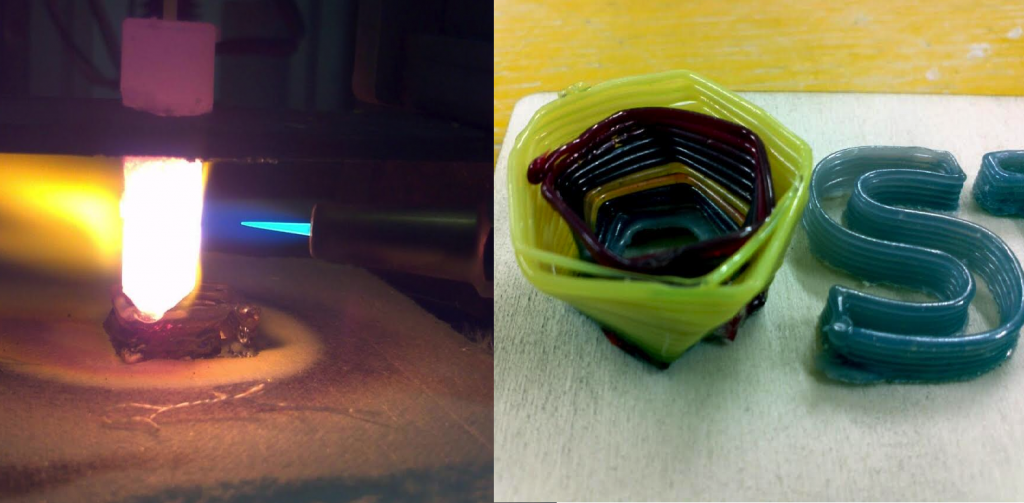 T. Brun, Jeremy Flower, Wyss Institute at Harvard University, Rubix Composites, Skutt Kilns, The Glass Art Society, MIT Center for Bits and Atoms, MIT Edgerton Center, MIT Central Machine Shop, MIT Mechanical Engineering Department, MIT Glass Lab, MIT Media Lab
T. Brun, Jeremy Flower, Wyss Institute at Harvard University, Rubix Composites, Skutt Kilns, The Glass Art Society, MIT Center for Bits and Atoms, MIT Edgerton Center, MIT Central Machine Shop, MIT Mechanical Engineering Department, MIT Glass Lab, MIT Media Lab
All images and videos courtesy Neri Oxman and The Mediated Matter Group
3D-printed glass: Where are we now?
[Image above] There have been multiple developments in glass 3D printing methods since MIT debuted its prototypes from project G3DP in 2015. Credit: Chikara Inamura, MIT News Office
Though additive manufacturing (AM) is still pitched as the up-and-coming technology in contrast to traditional subtractive manufacturing techniques, certain forms of AM—particularly metal AM—are fast approaching mainstream. Yet other forms of AM are far from reaching industrial capacity.
Especially glass AM.
Two common AM methods, selective laser sintering and fused filament fabrication, both rely on raising the temperature to just under or over the starting material’s melting point so it can be molded into a desired form.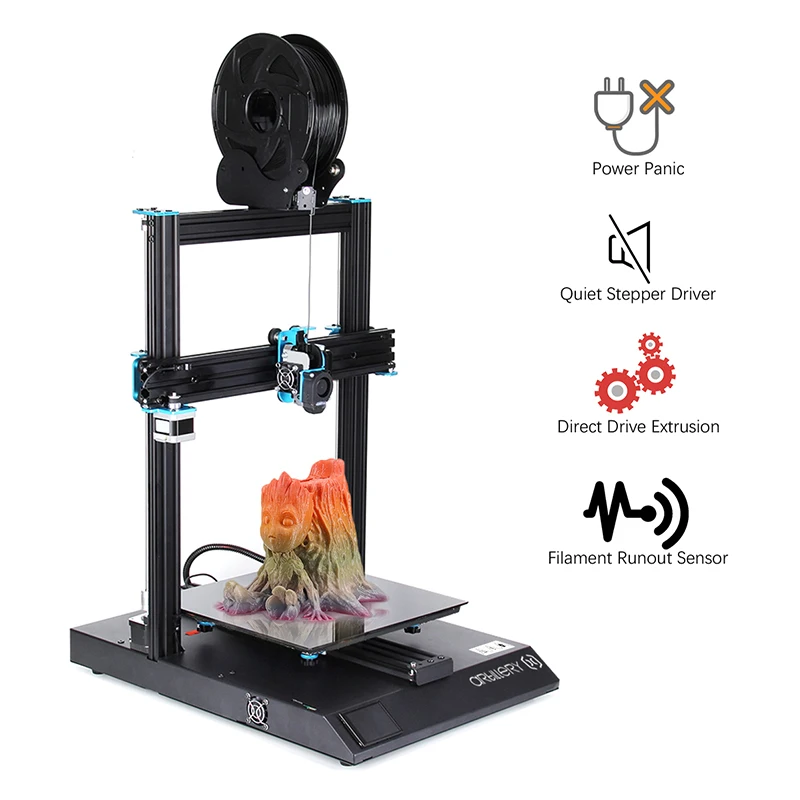 For polymers, only a couple hundred degrees Celsius are required to initiate material melt. But for glass, you need temperatures well over a thousand degrees Celsius for melting to take place.
For polymers, only a couple hundred degrees Celsius are required to initiate material melt. But for glass, you need temperatures well over a thousand degrees Celsius for melting to take place.
In 2015, we reported on some of the first groups to premier 3D-glass-printing technologies. In the almost four years since then, what new advances have been made in glass 3D printing?
From powder to molten glass
Prior to 2015, some groups found success 3D printing using glass powders. In these powder-based systems, an inkjet printer deposits droplets of binder solution on a thin layer of powder, and the binder and powder react to bind particles together and create a 3D object.
Then in 2015, a startup 3D printing company based in Israel called Micron3DP developed a system for 3D printing molten glass. Using a process similar to conventional fused filament fabrication techniques—except much hotter—Micron3DP created 3D objects using two types of glass: soda lime and borosilicate.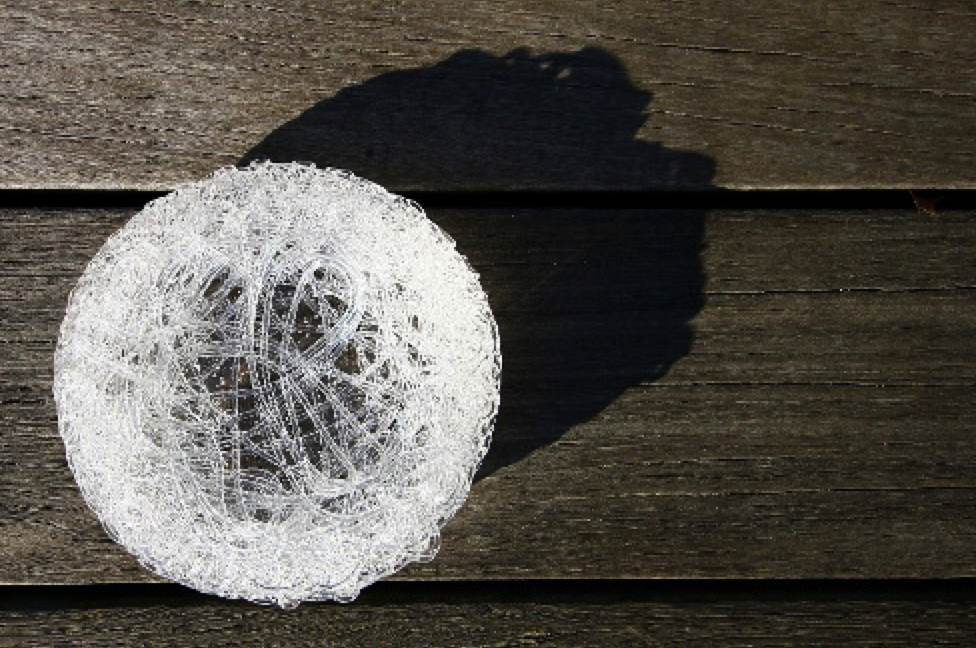
Not long after Micron3DP’s announcement, scientists from the Massachusetts Institute of Technology’s Mediated Matter group and MIT Glass Lab announced they too developed a method to heat glass to high temperatures and then 3D print the molten glass. Their project, called G3DP (Glass 3D Printing), used printed glass as both art and science.
Advances in 2017
2017 saw both Micron3DP and MIT improve on their 2015 technologies. First, in March, Micron3DP completed installation of its first fully operational high-resolution glass 3D printers inside its Kfar-Saba facility—and subsequently began negotiations for external beta testing. Then, in April, MIT demonstrated the results of G3DP2, its second glass 3D printing project, during Milan Design Week.
Yet despite the novelty of successfully 3D printing molten glass, this method of 3D printing has drawbacks—particularly poor resolution. Artistic expressions such as vases and bowls may not suffer from lack of precision, but high-tech applications requiring precise microstructures will.
Fortunately, 2017 was not limited to molten glass 3D printing advancements. Two separate groups in Germany and the United States debuted alternative glass 3D printing methods, each featuring a different technique.
Hungry for a pretzel? You may not want to take a bite out of this one—it is made from glass, using a stereolithography technique developed at the Karlsruhe Institute of Technology in Germany. Credit: Karslruhe Institute of Technology
The German group from Karlsruhe Institute of Technology used a stereolithography process to create intricate glass objects. In stereolithography, light is used to selectively harden liquid materials into solid parts, layer by layer. The team applied the stereolithography process to a special ink containing glass nanopowder suspended in a photocurable polymer, and then they fired the piece at 1,300ºC to burn off the polymer and densify the glass.
In the U.S., researchers at Lawrence Livermore National Laboratory, University of Minnesota, and Oklahoma State University also used a special ink to 3D print glass, but instead of stereolithography, their method relied on a direct ink writing process to print 3D objects at room temperature.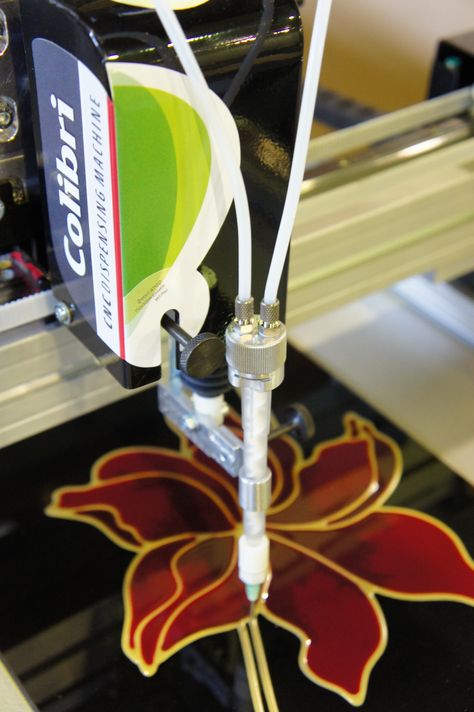
Where we are now
Since 2017, some groups have discontinued their work, while others—and new ones—have continued to advance glass 3D printing processes.
Micron3DP is no longer actively developing glass 3D printing, instead focusing on metal AM. In a 3D Printing Media Network interview with Micron3DP’s CTO Eran Galor, he explains that building a market for 3D-printed glass is more difficult than developing the technology. Until a suitable market emerges, “[w]e will not continue to actively develop [3D-printed glass],” Galor says.
Though industry may build according to market demand, academics are not always similarly constrained. The MIT team has continued to improve its G3DP2 system and recently published a paper describing the advancements.
On the other side of the world, another group is preparing to enter the game. Nick Birbilis and Darren Feenstra, professor and Ph.D. candidate, respectively, at Monash University in Australia, founded their company, Maple Glass Printing, as an outlet through which to file their provisional patent and seek industry partners to commercialize their glass 3D printer. Unique to their system is an emphasis on reducing glass waste, and Birbilis and Feenstra worked to specifically design a system that can handle mixed glass.
Unique to their system is an emphasis on reducing glass waste, and Birbilis and Feenstra worked to specifically design a system that can handle mixed glass.
As the AM market continues to develop and as other forms of AM take off, advancements in glass 3D printing are bound to progress—and we’ll keep you informed about new developments along the way!
3D printer prints with hot glass / Habr
alizar
Science 3D Printers Chemistry The Future is Here
A fragment of a printed vase with glass color changing during printing
World's first in the MIT Glass Lab developed a machine that prints free-form objects from optically clear glass. The technical process called G3DP allows you to adjust the transparency and color of glass, reflectance and refraction. All this opens up opportunities for the manufacture of absolutely incredible items that cannot be made using traditional methods.
If we turn to history, the first samples of transparent glass were obtained in Mesopotamia and Ancient Egypt about 4500 years ago. The recipes for the manufacture and processing of this unique material were kept in strict confidence. Now glass products can be shaped by blowing, molding, sintering from individual parts, etc. Physical properties largely depend on the method of manufacture.
With the development of human civilization, new ways of making glass products were invented. The Roman Empire invented metal tubes for blowing glass, and in the Industrial Age, the float process for mass production of flat heat-polished glass on an industrial scale. Each time, these discoveries led to a myriad of new uses for the material.
Perhaps a new process invented at MIT will also lead to new uses for glass.
The G3DP platform is based on the dual heating chamber concept. The top chamber (“Kiln Cartridge” in the diagram) operates like an oven at about 1040°C and holds enough material to print even architectural components. The molten material is directed into a heat-resistant nozzle made of an alloy of aluminum oxide, zircon and silicon dioxide. The lower chamber is for firing.
The molten material is directed into a heat-resistant nozzle made of an alloy of aluminum oxide, zircon and silicon dioxide. The lower chamber is for firing.
A full technical process paper (pdf) will be published in the September issue of 3D Printing and Additive Manufacturing (Vol. 2, Issue 3) and print samples will be shown on display at the Smithsonian Design Museum in 2016.
Printing process and finished product
Print samples
Tags:
- 0045 G3DP
- Glass
- 3D-printing
Habs:
- Scientific and popular
- 3D printer
- Chemistry
- The future here is
Total votes 21: 19 and ↓ 2 and ↓ 2 and look 2 +17 9000 19K
Comments fifteen
Anatoly Alizar @alizar
author, freelancer
Telegram
Comments Comments 15
glass 3d printer | 3d daily
Pelevin N.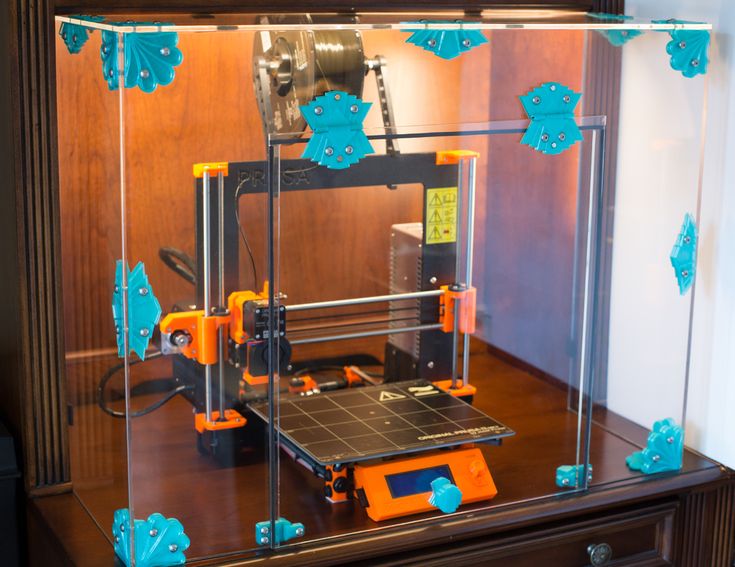 0 Comments 3d printing, 3d printers, Neri Oxman, Equipment, Technologies
0 Comments 3d printing, 3d printers, Neri Oxman, Equipment, Technologies
The number of materials that 3d printers can work with is growing every day. The extrusion process itself conquers new heights and, in addition to plastics, food and various metals, can use glass as a filler.
Previously, quartz sand or glass powder was used to 3D print with glass, but a team of researchers led by Neri Oxman has developed a 3D printer capable of working directly with molten source material. The technology used by the 3D printer is called G3DP (Glass 3D Printing).
G3DP is the first method of its kind to create completely transparent products, and uses glass as the main material. This technology allows you to open new frontiers in the field of glass processing, which appeared more than 4.5 thousand years ago, and approach the process itself from a new, technological point of view.
Standard FDM printers are limited by the amount of materials that can be used for printing, as well as the way they are fed to the print head.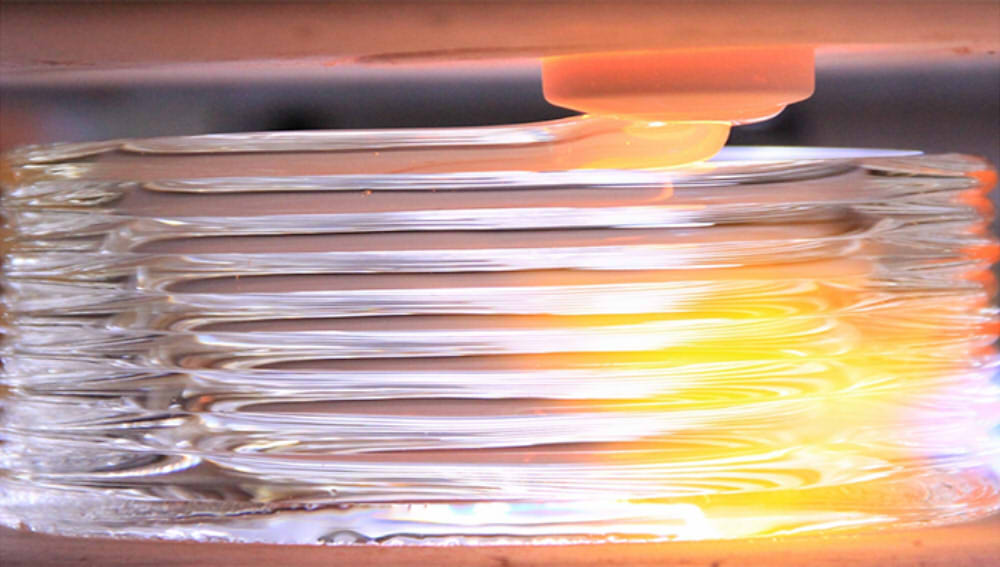 As a rule, this is plastic, which is stored on special coils and before getting on the platform for the product, it is preheated to the desired temperature and cooled. In addition, the cost of some types of fillers is quite high due to their properties, which sometimes simply does not allow beginner 3d lovers to use it.
As a rule, this is plastic, which is stored on special coils and before getting on the platform for the product, it is preheated to the desired temperature and cooled. In addition, the cost of some types of fillers is quite high due to their properties, which sometimes simply does not allow beginner 3d lovers to use it.
Against the background of these factors, glass has its own number of advantages, among which are the strength of the material, its optical properties and the availability of quartz glass, soda ash and other ingredients.
During the creation of a 3d glass printer, the developers faced a number of problems. Glass objects must be slowly cooled to room temperature, and the cooling process itself must take place in several stages, each of which has its own temperature range. This reduces the chance of destruction of the product from a sharp temperature drop.
The group originally used hand propane torches, but their use caused cracks in the printed object. The solution was found with the addition of heating to the annealing chamber, which made it possible to set the correct temperature algorithm during the printing process.
The solution was found with the addition of heating to the annealing chamber, which made it possible to set the correct temperature algorithm during the printing process.
Glass filler is fed into the 3d printer in the form of glass beads, which are placed in a special chamber. From there, it enters the heating area, where the temperature ranges from 1040 to 1165 degrees Celsius. It can be adjusted depending on the desired power, print speed, height of the future object and material feed speed. The glass filler is fed under standard pressure through a hole with a diameter of 10 mm. The product is built up in layers on a ceramic platform, heated with a 300-watt heater to a temperature of 1000 degrees.
The size of printed products is currently limited by the dimensions of the annealing chamber, which is 25 x 25 x 30 mm. It is additionally equipped with ceramic windows that allow you to observe the printing process.
3D printing with glass is an opportunity to solve many problems when working with many products.